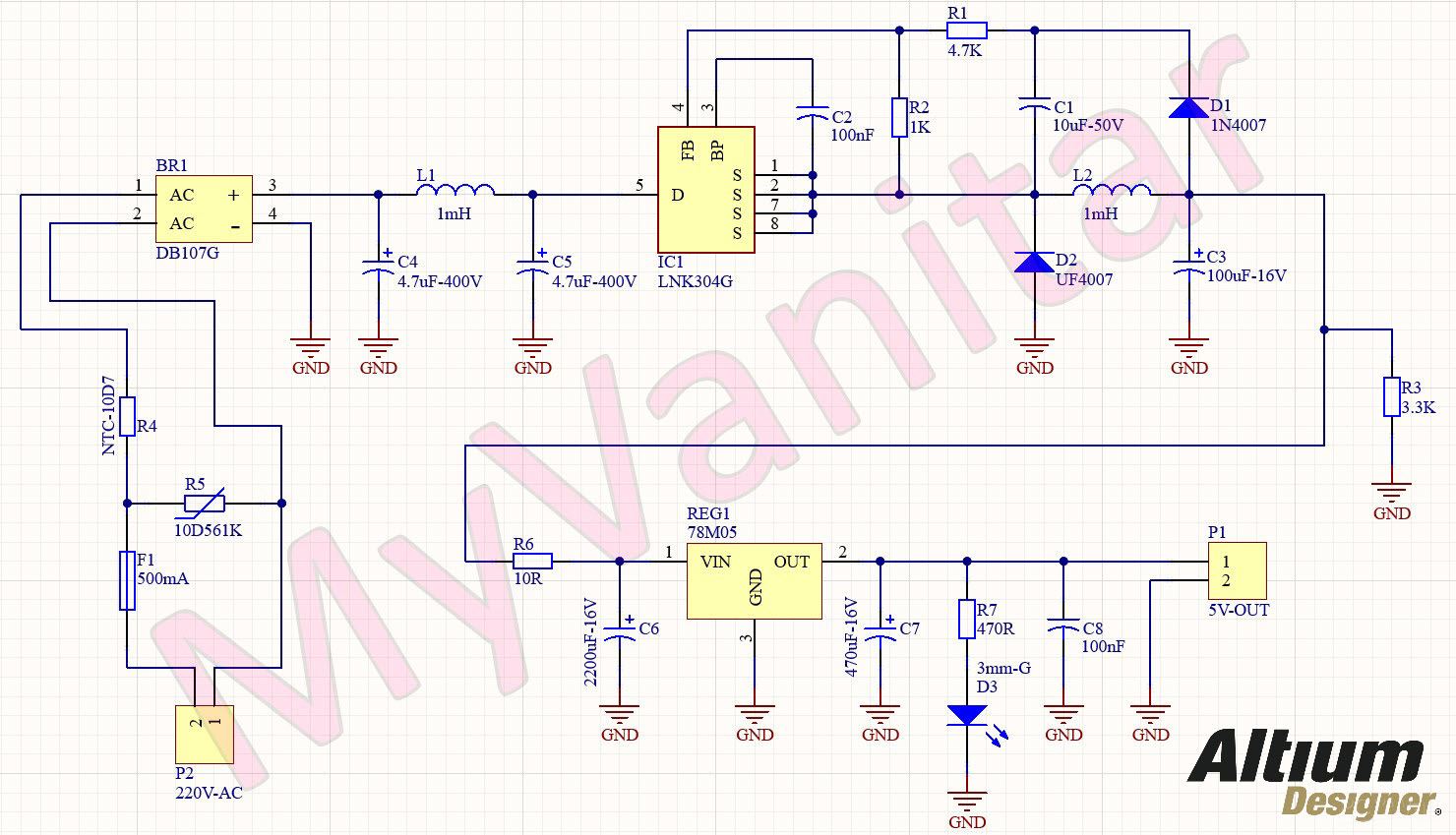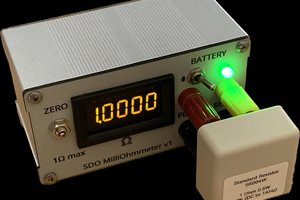Whenever you hear the transformerless supply term, you initially imagine the capacitor-based solution, which means a high voltage capacitor in series with the mains line, then a bridge rectifier, a Zener diode, a filtering capacitor, and so on. Such a circuit is not just unable to deliver sufficient current for many applications, also, it is not a reliable solution for the industry, although you might see such circuits in some cheap products that are designed to have a low cost.
A month ago, I was repairing a washing machine mainboard. In the examination process, I realized that it is equipped with an LNK304 chip that is used in transformerless supplies. So I decided to design a circuit based on this chip to be used in your applications. The circuit contains 220VAC mains input protection, output filtering, and a regulator.
To design the schematic and PCB, I used Altium Designer 22 and the SamacSys component libraries (Altium plugin). To get high-quality fabricated PCB boards, I sent the Gerbers to PCBWay and purchased original components using the componentsearchengine.com. To test the current handling and stability of the output voltage, I used the Siglent SDL1020X-E DC Load and examined the power supply output noise using the Siglent SDS2102X Plus oscilloscope.
Specifications
Input Voltage: 220VAC+/-15
Output Voltage: 5VDC
Output Current (Continous): 120mA to 150mA (can be increased, see text)
Output Current (Short time): 180mA
Output Noise (max): 30mVp-p (150mA load, 20MHz BW)
Input Protection: Fuse, NTC, Varistor
Output protection: short circuit and current limit at around 190mA
Circuit Analysis
Figure 1 shows the schematic diagram of the device. As it is clear, the circuit contains three main parts: the 220V Mains input circuit, LNK304, output filtering, and a 5V regulator.

Figure 1
Schematic diagram of the transformerless power supply using LNK304
220VAC Mains Input
The Mains input protection consists of F1, R4, and R5. R5 is the 10D561 Varistor. According to the datasheet: “Varistors are voltage-dependent, a nonlinear device which has an electrical behavior similar to back-to-back Zener diodes. TYEE series zinc oxide varistors are nonlinear resistors, consisting main of zinc oxide and several kinds of metal oxide additives. They are bilateral and symmetrical V-I characteristics curve and unparalleled large peak current capability are used for absorption of transient voltage, suppression of pulse noise and circuit voltage stabilization.”
We are not sure where this circuit is gonna be used. So we have to protect it against switching surges from various kinds of relays and electromagnetic valves using a varistor like the abovementioned one.
F1 is an ordinary 500mA fuse that naturally protects the circuit against any weird incidents that might cause huge current leakage, explosion, or even fire. R4 is the 10D7 NTC that protects the circuit against inrush currents. BR1 is the DB107G bridge rectifier [1] and C4, C5, and L1 build a low pass Pi filter to reduce the noise and ripple as much as possible.
LNK304
The main component of this circuit is IC1, LNK304 indeed [2]. According to the datasheet: “LinkSwitch-TN is specifically designed to replace all linear and capacitor-fed (cap dropper) non-isolated power supplies in the under 360 mA output current range at equal system cost while offering much higher performance and energy efficiency. LinkSwitch-TN devices integrate a 700 V power MOSFET, oscillator, simple On/Off control scheme, a high-voltage switched current source, frequency jittering, cycle-by-cycle current limit, and thermal shutdown circuitry onto a monolithic IC. The start-up and operating power are derived directly from the voltage on the DRAIN pin, eliminating the need for a bias supply and associated circuitry in a buck or flyback converters. The fully integrated auto-restart circuit in the LNK304-306 safely limits output power during fault conditions such as short-circuit...
Read more » hesam.moshiri
hesam.moshiri


 Kuba Sunderland-Ober
Kuba Sunderland-Ober